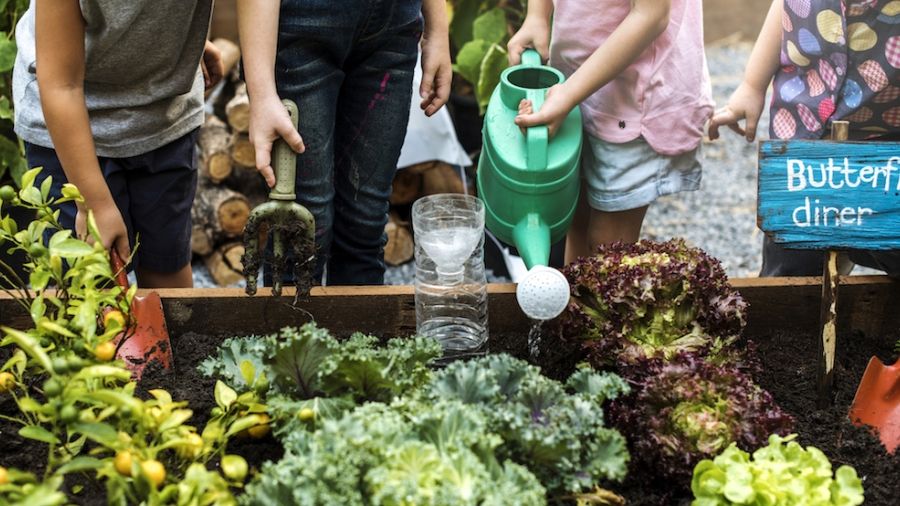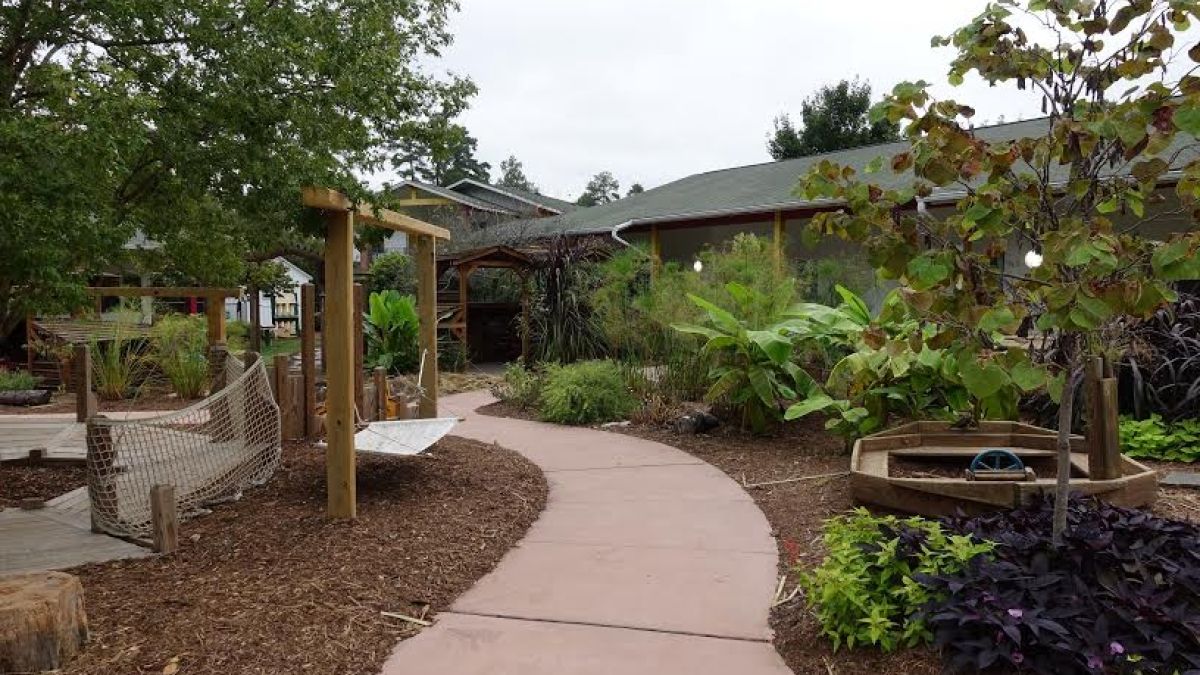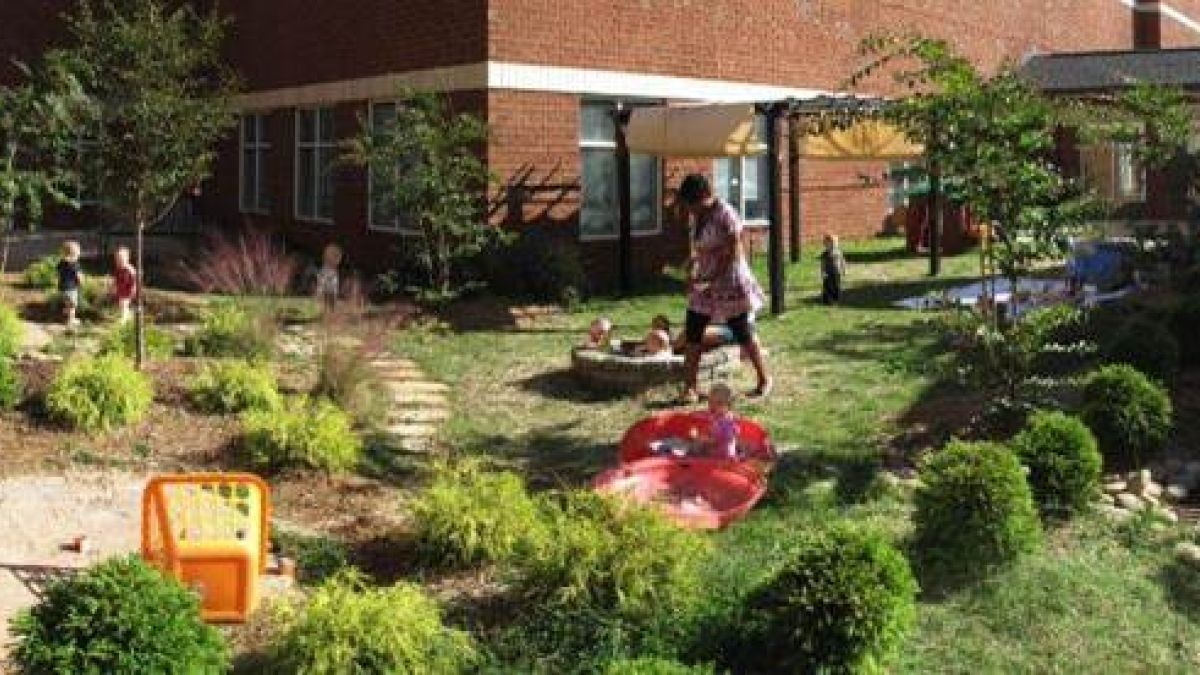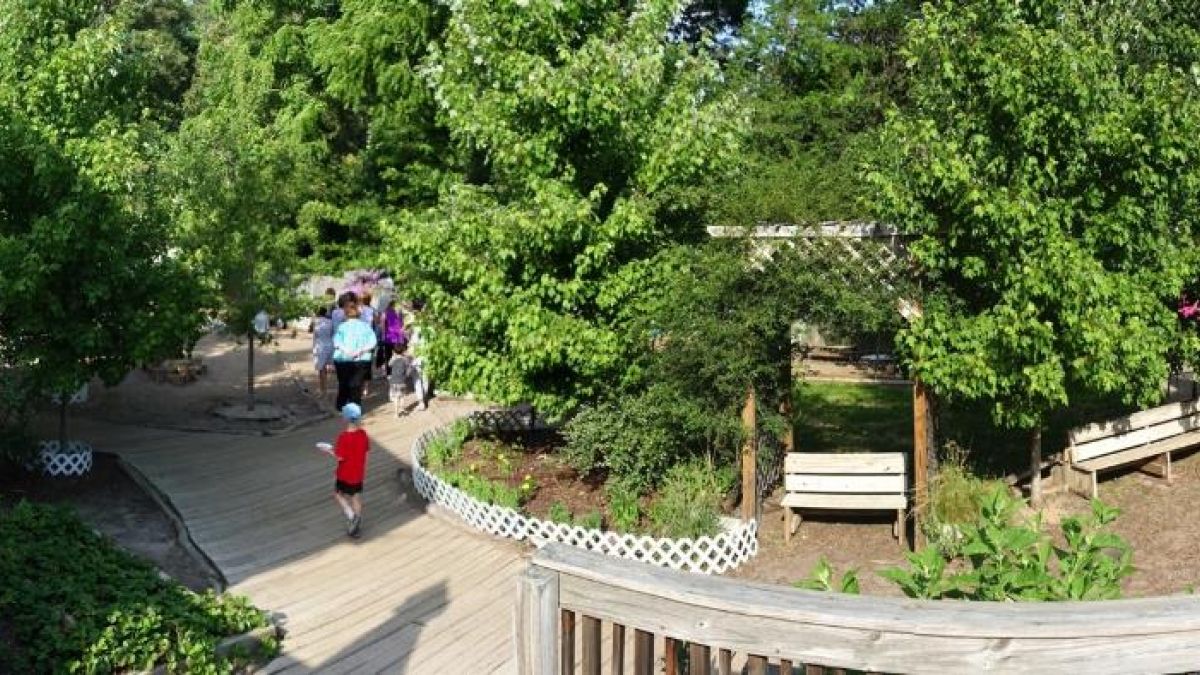
For many adults, the fondest childhood memories are the times they spent outdoors in nature. This time was free and unstructured, with no boundaries, and plenty of time to create and explore. It was also foundational in their mental and physical development.
Research shows that nature and outdoor time enriches nearly all aspects of the development, health, and wellbeing of young children. Furthermore, nature and outdoor time also helps children develop a lifelong love of nature and wildlife. The most powerful nature-connection experiences need to meet certain criteria and should be:
- In a natural setting (with vegetation);
- Focused on nature rather than some non-nature activity;
- Recurring, so that they become a regular part of the child’s life;
- Providing opportunities for a child to learn skills, feel successful, and have other highly affirming experiences; and,
- Supported by a caring and helpful adult.
Children’s play and exposure to nature are now recognized by the public health community as essential in supporting proper and well-balanced childhood development (Chawla, 2015; Ginsberg, 2007; Burdette & Whitaker, 2005).
In this article, I describe one type of amenity that facilitates quality nature experiences in settings where young children spend a big part of their day: outdoor learning environments in early childhood centers. Then, I make some policy and quality rating recommendations that support the installation and effective use of outdoor learning environments so that, together, we can advocate more effectively for the nature time and settings that we know are critical to whole child development.

Outdoor Learning Environments
There are many ways to incorporate nature into young children’s care and education. The Early Childhood Health Outdoors (ECHO) program of the National Wildlife Federation is based on a decade of research by North Carolina State University’s Natural Learning Initiative as it brings natural play areas to early childhood centers. These natural play areas are specially and carefully designed to maximize children’s sense of exploration, stimulate physical activity, and increase their interactions with and connections to nature.
The ECHO model includes a rich variety of landscape design features to promote structured and unstructured physical activity, free play, and learning. An ECHO site includes at least two outdoor gross motor skill development features (e.g., climbing features or looping pathways) and at least two outdoor learning settings (e.g., gardening area, loose parts station, or dramatic play area). Children should also have access to a looping pathway and wheeled toys.
These outdoor play and learning environments include a variety of plants and micro-habitats representative of local area flora and also include natural features that enrich children’s outdoor time. Examples include non-toxic trees, shrubs, or vines; topographic variations (such as mounds, terraces, slopes); a variety of ground surfaces (mulch, grass, pebbles); smooth rocks, wood or logs; non-poisonous flowering plants or garden plants and vegetables; birdfeeders, bird baths, and birdhouses. Consumption of fruits and vegetables grown on-site is expressly allowed.
The underlying ECHO research shows that, by improving the design of outdoor spaces, keeping it affordable, and providing hands-on training for early childhood center professionals, children and early childhood programs can use outdoor spaces to reap major benefits. Children and care providers spend and enjoy much more time outside in these spaces participating in behaviors that make them stronger, improve their cognition, teach them social and motor skills, and help them get improved sleep. Outdoors, children are more physically active and engage in more interactions with each other and adults. And parents are often more likely to linger at these child care programs and watch the fun – which improves the overall community experience.

Supporting Policies and Quality Ratings
One would think that, with such overwhelming evidence of their developmental benefits, every early childhood center would have a well-crafted nature and outdoor space. But relatively few of them do. The outdoor learning environment (OLE) goes almost unmentioned in national and state level standards, guidelines, and regulations, and to-date has been largely overlooked in the multi-billion dollar efforts to enhance the quality of early childhood education. Because early learning and care are largely regulated at the state level, the National Wildlife Federation’s ECHO team is working to develop OLE policy and quality rating recommendations and best practices in collaboration with state agencies. We have found that there are several simple policy recommendations that facilitate this process.
- Replacing the word “playground” with “Outdoor Learning Environment” when referring to the overall outdoor space helps to avoid creating legal confusion over whether certain playground equipment safety standards may apply to parts of the outdoor space for which they were never intended (plants, garden bridges, playhouses with floors raised just a few inches off the ground, etc.) The term also encourages people to think of outdoor spaces as areas that include more than just playground equipment.
- We also recommend advocating for the following baseline enhancements to licensing requirements:
- Minimum outdoor space requirement of 75 square feet per child and addition of requirements to enrich the outdoor space;
- Exemptions for minimum outdoor space only in narrow circumstances, such as when on-site outdoor space is unavailable, and daily off-site walks to nearby parks or public spaces are provided;
- Daily outdoor programming requirement of at least 30 minutes and one planned outdoor activity per day;
- The consumption of on-site-grown fruits and vegetables expressly allowed.
- NWF also suggests working to adapt early childhood center Quality Rating and Improvement Systems (QRIS) to include language supporting features found in outdoor learning environments. Most states have QRIS rating systems for both formal childcare centers and family childcare homes. These rating systems help parents identify high quality programs that go beyond the minimum licensing requirements. Meeting guidelines found in rating systems is typically voluntary; however, it is often tied to reimbursement levels for children receiving state subsidized care. Similar to the licensing recommendations, QRIS should include the following specific standards:
- A standard for minimum time outdoors, weather permitting. The Michigan standard of 30 minutes per 3 hours of programming is a minimum standard;
- At least 75 square feet of outdoor learning space per child;
- Standards for features of outdoor learning environments.

Conclusion
Bringing well-designed nature and outdoor spaces to the many thousands of early childhood centers that we have in the U.S. may seem like a tall order. But the benefits of doing so for improved long-term health and proper physical and emotional development are immense. Relative to the investment, they will pay huge dividends at the local, state, and national levels. The National Wildlife Federation and its partners are committed to bringing widespread policy reforms and a recognition by decision makers of how critical it is to have childcare centers that offer outdoor learning and play and that are designed to foster healthy growth and, from our perspective, stronger connections to nature.
For more information on the recommendations stated above and others, please contact Josh Falk at the National Wildlife Federation or Daniel Jost at the Natural Learning Initiative.
A policy brief on Achieving Quality in Outdoor Play & Learning Environments for Children Birth to Five (Natural Learning Initiative, 2018) suggests further actions to achieve progress in outdoor play and learning environments.
About the Author
Josh Falk is Children and Nature Program Manager at the National Wildlife Federation.
References
Burdette, H. L., & Whitaker, R. C. (2005). Resurrecting free play in young children: looking beyond fitness and fatness to attention, affiliation, and affect. Archives of pediatrics & adolescent medicine, 159(1), 46-50.
Chawla, L. (2015). Benefits of nature contact for children. Journal of Planning Literature, 30(4), 433-452.
Ginsburg, K. R. (2007). The importance of play in promoting healthy child development and maintaining strong parent-child bonds. Pediatrics, 119(1), 182-191.
Natural Learning Initiative. (2018). Policy brief: achieving quality in outdoor play & learning environments for children birth to five. The Natural Learning Initiative, NC State University.